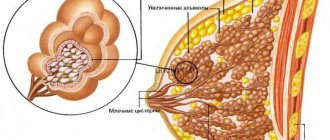Moderate, non-discomfortable white discharge in women indicates the proper functioning of the reproductive system. Their intensity and consistency vary depending on the phase of the menstrual cycle. This is due to normal physiological processes occurring in the body. If white vaginal discharge has acquired an unpleasant odor or changed structure, then it signals the development of pathology and is a reason to contact a gynecologist.
Normal vaginal discharge
White vaginal discharge is observed in various situations. The consistency of normal secretion is thick and quite liquid, and its quantity is abundant and meager. Both of these options are considered normal.
The reasons why white flakes appear on girls' panties can be both pathological and natural. Such changes are typical for certain periods of the cycle and early stages of pregnancy. They can be triggered by intimacy and stress.
Ovulation
During certain phases of the cycle, the volume of secretion increases. Such changes are noted at the time of ovulation. In this case, a stretchy whitish odorless discharge appears in women, similar to egg white. Mucus, the color of milk, can be observed for several hours or a couple of days after the release of the egg. Over time, under the influence of progesterone, it acquires a thick consistency and is produced in significantly smaller quantities.
Early pregnancy
Whitish discharge in a virgin most often indicates the imminent arrival of regula, but if the woman has already had sexual experience, then such changes can signal pregnancy. Such symptoms appear due to hormonal changes in the body.
The amount of secretion gradually increases. Often, white discharge without itching or odor is observed throughout the first trimester. They are considered to be the absolute norm.
White discharge during pregnancy can occur for various reasons, so we recommend studying this issue in more detail.
Discharge during sexual intercourse
White lubricant that appears during intimacy is considered normal. When aroused, mucus begins to be produced, the volume of which increases significantly as desire increases and reaches its maximum amount upon completion of sexual intercourse. Viscous lumps should not cause concern - this is a natural phenomenon.
You also need to take into account that mucus has different characteristics depending on whether a condom was used or not. If intimacy was unprotected, then the secretion mixes with sperm and acquires an unusual smell and yellowish color. When using barrier contraceptives, the artificial lubricant of the condom comes into contact with the fluid released from the vagina - and quite thick leucorrhoea is formed.
Stress
Often, white discharge from the uterus is noted against the background of a delay, but fertilization has not occurred. Such changes can be triggered by stress. If a delay in menstruation and white discharge are observed for a maximum of five days, and the discharge itself is odorless, does not increase in volume and does not cause discomfort, then there is no reason to panic.
Does vaginal discharge change after childbirth?
After childbirth, the female body begins to gradually recover and return to its previous “mode” of work. However, this does not happen quickly. During the postpartum period, all women experience cleansing of the uterus, which is manifested by heavy uterine bleeding. It is observed for about 2-3 weeks, after which the amount of bloody discharge decreases and is first replaced by pink and then scanty brown discharge.
And speaking of how long it takes for postpartum cleansing to occur, it should be said that on average this process takes from 7 to 9 weeks. Then the bleeding stops and leucorrhoea appears instead.
If a woman is breastfeeding, the discharge may also be copious and thin, white, clear, or creamy. This is due to increased production of prolactin in the body, which ensures the production of breast milk. As soon as lactation stops, the woman's menstrual cycle is restored and vaginal discharge becomes the same as it was before pregnancy.
Signs of pathological discharge
When the immune system is suppressed, hormone levels change and antibiotic medications are taken, pathogenic microorganisms actively multiply, resulting in an inflammatory process.
The development of diseases is indicated by the following nature of the secretion:
- copious white discharge with a thick, cheesy consistency;
- foamy mucus;
- viscous discharge with a pungent, very unpleasant odor.
Attention should also be paid to accompanying symptoms. Regardless of whether the discharge is odorless or has an unpleasant aroma, it raises concerns if additional clinical manifestations are present. Itching, discomfort during urination and intimacy, redness of the genitals, pain in the abdomen and hyperthermia indicate the onset of the pathological process. Such changes are a reason to immediately consult a doctor.
Mucus discharge
A mucous secretion is considered normal. They become opaque on linen during the day due to the presence of epithelial cells. The secretion of mucus, which does not have a strong odor and does not cause discomfort, is also confirmation of the normal functioning of the ovaries.
During the day, a woman may secrete approximately 2 ml of secretion. Don't worry if it has a white tint, as this is a result of cleaning the vagina. The structure and quantity are directly related to the phases of the menstrual cycle.
- From 1 to 7 days. A secretion of a pink or brown hue is released, which increases in volume from the second to third days and may be accompanied by the release of clots. By the fifth day, the release of this type of secretion decreases, and for some it disappears completely.
- From 5 to 14 days. During this period, the egg matures. There is no significant appearance of leucorrhoea at this time; it can be released up to about 2 ml per day. Color may vary from white to yellow.
- From 14 to 15 days. Ovulation period. This period is characterized by the greatest secretion of mucus due to estrogen reaching its maximum level. Often at this time, watery discharge is observed, as well as sticky and more stretchy discharge.
- From 16 to 28 days. Premenstrual period. The work of the reproductive system subsides, the volume of secretion released becomes smaller, but at the end of the cycle a new surge is possible.
In addition, such a phenomenon may be the result of climate change, a stressful situation, the use of hormonal drugs, allergies and failure to comply with hygiene rules.
Watery discharge like water in the first weeks is a sign of pregnancy. But if an unpleasant odor is added to them, this is a sure sign of infection in the body.
Important! Liquid, transparent discharge in the third trimester is a “bell” about the possibility of premature birth.
Causes of pathological discharge
White thick discharge in women appears for both natural and pathological reasons. To identify the disease, you need to pay special attention to the consistency, smell, as well as the volume of secretion and accompanying symptoms. Such changes are often provoked by candidiasis, bacterial vaginosis and a number of other diseases of the reproductive system. In this case, scanty and abundant white discharge requires immediate treatment.
Development of candidiasis
Vaginal candidiasis (thrush) is a common disease. Its occurrence can be triggered by stress, hormonal imbalance, failure to comply with the rules of intimate hygiene, taking antibiotics and oral contraceptives. Under the influence of these factors, Candida fungi actively multiply and the main symptoms of thrush begin to appear.
Initially, thick white discharge, odorless and itchy, with a cheesy consistency, may be observed. With further development of the pathology, additional symptoms appear. White vaginal discharge takes on a sour aroma. A woman suffers from burning and itching in the genital area. If a bacterial infection occurs, the secretion becomes gray or yellow.
Bacterial vaginosis
The development of pathology is caused by a violation of the vaginal microflora and the predominance of pathogenic microorganisms in it. Such changes occur due to suppressed immunity, intestinal dysbiosis, improper organization of the diet and wearing underwear made of synthetic materials.
As this disease develops, the skin in the vaginal area begins to itch, and a liquid secretion appears that has an unpleasant odor of rotten fish.
Bacterial vaginosis requires treatment. Lack of proper therapy can lead to inflammation of the appendages and genital organs, as well as infection into the vagina. The situation will worsen significantly.
Development of cervicitis
The occurrence of this disease is due to the onset of an inflammatory process that occurs in the part of the cervix that exits into the vagina. At the same time, an odorless mucous discharge begins to be released, in which an admixture of pus is often observed.
The causes of the pathological process, as a rule, are infections, damage to the uterus during childbirth and scars formed after surgery.
Pathology of the cervix
Thick, odorless and itchy discharge may appear due to the development of erosion of the cervix or the growth of a malignant tumor on it. In this case, the woman feels a mild nagging pain in the abdominal area. In addition, regardless of the period of the cycle, a milky, odorless daub is observed. Also among the symptoms of the pathology is an admixture of blood in the secretion after intimacy, but such clinical manifestations are rare.
Often the disease is asymptomatic.
White discharge without odor and itching in women
Vaginal secretions create a special environment on which a woman’s reproductive health largely depends. Specific mucus is secreted from the cervix and vaginal mucosa. Vaginal secretion is required to protect the genital tract from the penetration of foreign microorganisms and the development of infection. Gradually the mucus flows down. Because of this, she exits the genital tract every day. Vaginal secretions are reflected on underwear or pads in the form of whitish or almost transparent spots. This condition is considered normal. In this case, specific treatment is not carried out. Normal vaginal discharge is characterized by the following features:
- there are no foreign impurities;
- no more than one teaspoon of vaginal secretion is secreted per day;
- discharge is transparent or slightly whitish;
- there is no unpleasant odor;
- the discharge is not accompanied by itching, burning, pain or any other discomfort.
During the menstrual cycle, the nature of the discharge constantly changes. Immediately after the end of menstrual bleeding, the secretion becomes transparent. Closer to ovulation, its consistency changes. It becomes thick and viscous. At the same time, on any day of the cycle, vaginal discharge remains light. They do not have a pungent odor. The process of vaginal secretion is not accompanied by unpleasant sensations. If a woman experiences pain in the lower abdomen, itching or burning, this indicates the presence of pathology in the functioning of the reproductive system.
Diagnosis of diseases
To understand why odorless or uncharacteristic odorless white discharge appeared, the doctor first conducts an examination on the gynecological chair and studies the medical history. A swab is immediately taken to detect infection.
In addition, a number of additional studies are prescribed to help find out the exact reason for the appearance of secretion like milk:
- flora smear;
- blood test to determine hormone levels;
- bacterial culture;
- Ultrasound;
- PCR diagnostics;
- colposcopy.
Only after the diagnosis is made, the doctor prescribes a course of therapy.
What discharge may indicate a disease?
With a decrease in local or general immunity, poor hygiene, taking antibiotics, or hormonal imbalances, opportunistic organisms that are normally found in the vagina without causing harm can begin to multiply and lead to an inflammatory process. If a girl experiences the following type of discharge, this is a symptom of any diseases or disorders and requires examination and thorough examination by a gynecologist:
- Very abundant, white, thick, cheesy discharge in girls. If the discharge resembles cottage cheese, and the woman experiences itching and burning in the vagina, especially while sitting cross-legged, this is a clear symptom of thrush in women and girls. Moreover, thrush or vaginal candidiasis does not depend on whether the girl is sexually active or not.
- Foamy, copious discharge - more than 1 teaspoon per day.
- Discharge of any pronounced color - brown discharge, yellow, green or other noticeable shades.
- Unpleasant odor - discharge with the smell of fish, putrid odor, sour, onion odor and others.
- Any suspicious discharge, especially in combination with itching, dryness or discomfort during intercourse, redness of the external genitalia, pain in the lower abdomen (on one side or both sides just below the navel), burning, pain when urinating, fever or persistent pain during and after sexual intercourse.
If leucorrhoea begins to change color, smell, quantity, and irritation and discomfort appear in the genital area, this is considered pathological changes and discharge, and the cause of its appearance should be determined. Also, the discharge can be different in origin, that is, it can come from different parts of the woman’s reproductive system. The classification of discharge by origin is as follows:
- Tubal leucorrhoea - appears when the fallopian tubes become inflamed, and fluid accumulates in the tubes, which first enters the uterus, then exits through the cervix into the vagina.
- Vaginal leucorrhoea is the most harmless discharge, when, due to inflammatory diseases of the vagina, various white, yellow discharges appear, most often with an unpleasant odor - this can be trichomoniasis, gardnerellosis, thrush, etc.
- Cervical leucorrhoea - appears with inflammation of the cervix (cervicitis) of any etiology. The cause may be mycoplasmosis, chlamydia, ureaplasmosis, gonorrhea, etc.
- Uterine leucorrhoea - with endometritis of any etiology. In this case, the inflammatory exudate flows through the cervical canal into the vagina and mixes with vaginal secretions.
Physiological reasons if the discharge is like jelly
Often a woman simply does not think about what normal vaginal discharge should be.
And normal, that is, healthy discharge can be considered natural when the discharge is odorless and there is no pain in the abdomen, when there is no discomfort in the lower abdomen, when the discharge is neither abundant nor scanty, when there are no blood streaks, clots, flakes in the vaginal discharge, specific, pungent and unpleasant odor. The biologically complex mechanism of the menstrual cycle provides the possibility of realizing the reproductive function of the female body. It is accompanied by natural processes that can affect changes in the nature of vaginal secretion. During the three phases of the menstrual cycle, hormonal levels change, characterized by an increase or decrease in the synthesis of certain hormones. During the follicular phase, estrogen production increases. During the ovulatory period, the production of luteinizing hormone promotes the maturation of the egg in the dominant follicle, which allows it to exit into the fallopian tube. In the luteal phase, the corpus luteum produces progesterone, androgens, and estradiol, preparing the woman’s body for pregnancy in the event of fertilization of the egg. In the absence of fertilization, hormones act on the endometrial layer, forcing it to be rejected, and the next menstruation occurs.
Vaginal discharge changes its structure slightly in different phases of the cycle.
They are more liquid at the beginning of the monthly cycle, and then become somewhat thicker and acquire viscosity. This is especially noticeable during the period of ovulation. A woman may notice jelly-like mucus secreted from the genital tract. Such changes in discharge are caused by the action of progesterone, which increases the production of mucous secretion in the cervical area in order to ensure retention of the fertilized egg in the thickness of the uterine layer in the event of possible conception. Jelly-like vaginal discharge often accompanies the entire first trimester of pregnancy. If the woman is healthy, the discharged secretion will not have a sharp specific odor, and its shade will be transparent or with a slight white coating. A change in the color of the discharge from transparent to greenish or with an admixture of purulent inclusions indicates the beginning of the development of gynecological pathology, so you should definitely consult your treating gynecologist to exclude its negative impact on the development of the fetus.
In some cases, the abundance of clear mucus may be increased due to the use of certain medications that increase the level of protein in the vaginal discharge. However, they should not have an unpleasant odor.











